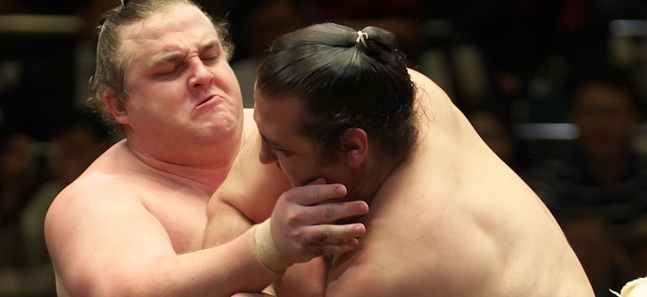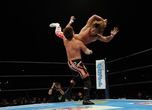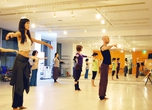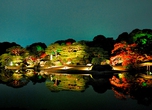Sumo from dawn
In the presence of giants – when, where and how to watch asageiko

Posted: Thu Sep 26 2013
There is something just that little bit special about attending a sumo tournament when on a visit to Japan. The sport is known around the world, but is so often misunderstood. Fat guys playing at handbags is the common misconception, and whatever your first impressions, chances are your friends back home have never even seen one of Japan's men of power on TV, let alone in person. This is your chance to get within a few metres as they go head to head with no holds barred.
The what and the where
Few Japanese, and fewer foreigners, ever think of attending a morning training session (known as asageiko). And it is likely that fewer still will ever realise that they can easily attend what is perhaps the very best opportunity to see sumo up close and in person. A number of companies, some reputable, some with guides who are barely aware of the rules, let alone the in-depth ins-and-outs, charge tourists a small fortune for the opportunity to visit a sumo stable to see the early morning training. But, with just a little prior planning, a decent alarm clock, and the ability get up pre-dawn, you can do the same for no charge. There are currently around 50 sumo stables in the Tokyo area. Some welcome early morning visitors, despite the oft-repeated myth that asageiko is an aspect of sumo culture only open to those with the closest connections to the sport. Most of the stables can be found in eastern Tokyo, around Ryogoku on the JR Sobu Line, and are usually a hive of activity by 7am as wrestlers in ascending rank order are put through their paces in harsh training environments.
The how and the when
To attend an asageiko session, all you really need to do is a little bit of homework to find out which stables are friendly to foreigners, where they are and how to get there – most of this information can be found online. Calling ahead is a must – in the local lingo, of course, so try to get a hotel staffer or friend to help if Nihongo is not your thing. Ideally, you should try to call the afternoon or evening before. Timing-wise, if you're matching your trip to Japan to coincide with asageiko (yes, some folks do!), try to be in town in the two or three weeks before a tournament to catch the full-on practice, but don't expect any stable to hold training on a Saturday or Sunday. You might get lucky, but weekend training is the exception, not the rule. Perhaps surprisingly, during the six tournaments each year you can pretty much fuggedaboutit. While some training does take place before wrestlers head to the arena to fight, it's little more than a short session of stretches and practice moves. Similarly, the week after a given tourney comes to a close the wrestlers have a week off for R&R, so don't expect any action.
The dos and don'ts
When visiting anybody's workplace or home, there are, of course, rules to follow – and sumo practice is no exception. Here are some of the most important dos and don'ts to keep in mind when visiting a stable.
• First off, as you arrive and enter, a slight bow to any seniors clearly overseeing the activities on the dohyo will always be appreciated and noted even if you will rarely, if ever, be the recipient of a reciprocal nod of the head. If no seniors are immediately visible – often the case when arriving early – then a brief bow towards the wrestlers will suffice.
• Keep your lips locked. No talking, not to each other, and never to the wrestlers. If you must communicate with a friend, use a pencil and paper.
• When positioning yourself, sit where the wrestlers gesture for you to sit but do not take cushions to sit on even if you see them. Most stables will offer a cushion called a zabuton but there are no guarantees.
• Cross legged is fine, legs to the side too, as is moving from time to time to aid in circulation. But, do avoid pointing the soles of your feet towards the fighting area.
• Still on he subject of sitting on the floor, keep feet covered with socks or tights.
• Food and drink are huge no-nos, as is smoking – even if you see stable masters smoke, don't be tempted to light up. Some do, most do not, and the US couple objecting to a former high-ranking wrestler smoking in what is, in effect, both his own home and his place of work are still remembered with disdain, and much mirth as to their expressions when blanked.
• Inside the stables refrain from taking photos until after training has finished, when wrestlers are usually happy to pose with you outside. At the same time, most wrestlers would be more than happy to chat for a while if you speak a little Japanese.
But above all else…
• Relax – as long as you don't light up while humming your national anthem in bare feet as you swig a beer, you should be okay.
• Get the timing right for your visit – take in as much as you can, and a morning spent in the company of Japanese giants will be one that's well worth remembering.
Tweets
- About Us |
- Work for Time Out |
- Send us info |
- Advertising |
- Mobile edition |
- Terms & Conditions |
- Privacy policy |
- Contact Us
Copyright © 2014 Time Out Tokyo














Add your comment